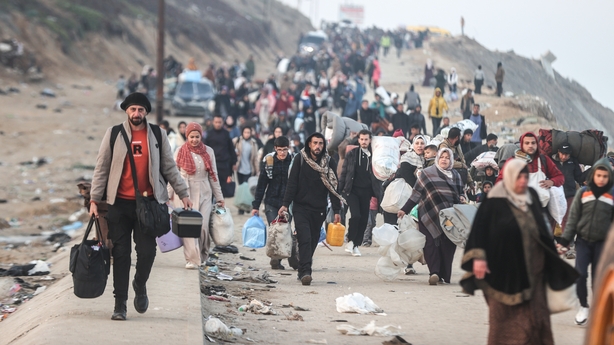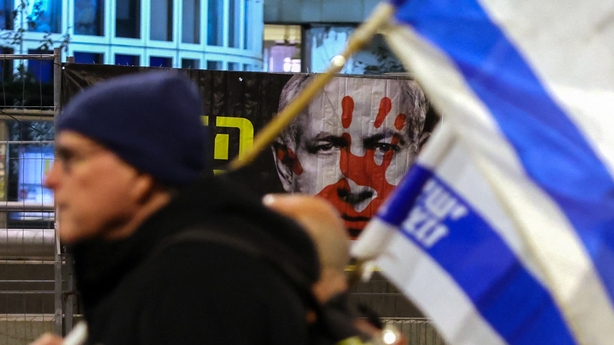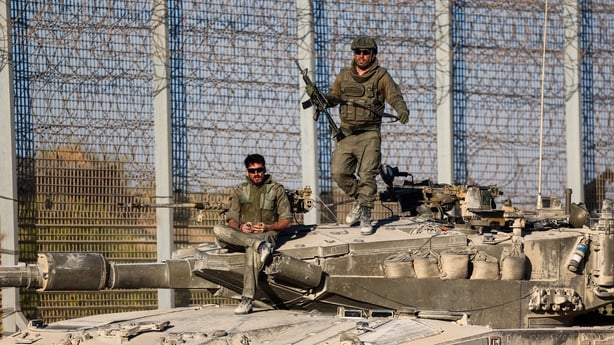When Israel and Hamas struck their ceasefire deal in the middle of last month, there was much debate about who could claim credit: Joe Biden or Donald Trump.
Mr Biden was quick to note that the agreement followed the "exact framework" his administration had helped craft last May.
He was not wrong.
The only addition hammered out in early January was "Appendix I" - a mere 600 or so words laying out the "practical procedures and mechanisms to implement the agreement".
But the timing spoke volumes: neither side seemed eager to test Mr Trump's threat of there being "hell to pay" if a deal was not reached before he took office.
His brash Middle East envoy, Steve Witkoff, reportedly drove this point home to Israeli Prime Minister Benjamin Netanyahu in a particularly heated meeting in Jerusalem.
And so the deal materialised just days before the inauguration in the US.
The deal is usually described as a "fragile" ceasefire for a reason.
The two sides have spent nearly two decades locked in a cycle of violence and mistrust, with each viewing the other's very existence as an existential threat.

That tension has persisted since the ceasefire took effect on 19 January - evident in Hamas's show of force during Thursday's hostage handover and the subsequent delay in Israel releasing Palestinian prisoners.
While attention is naturally focused on events on the ground, the key to this deal's survival almost certainly still lies with the US.
If the ceasefire endures, it will be because Donald Trump demands it.
That view is shared by the mother of 23-year-old Guy Gilboa-Dalal, one of the 79 remaining hostages being held by Hamas in Gaza.
In an emotional radio interview yesterday, Ms Gilboa-Dalal repeatedly invoked Mr Trump's name - saying he was the one person she trusts to bring her son back home.
In other words, she does not trust Mr Netanyahu, whose far-right partners have threatened to collapse his government if the ceasefire moves beyond this first six-week stage.
Mr Trump's recent rhetoric has not inspired confidence either - not least his suggestion that Gaza be "cleaned out" and its population relocated to Jordan and Egypt.
However, his envoy's tour of the Middle East this past week, including to Saudi Arabia, indicates Mr Trump remains committed to the three-phase ceasefire plan.

Crucially, more war in Gaza would delay the normalisation of relations between Israel and Saudi Arabia - a key Trump administration priority.
Mr Netanyahu's visit to Washington this week will reveal where the US president truly stands.
The Republican's meeting with the Israeli leader tomorrow will mark the first time the new president has hosted a foreign leader since he took office - a detail that Mr Netanyahu called "testimony to the strength of our personal friendship".
Yet the Israeli prime minister will arrive at the White House with a barely disguised desire to resume the war in Gaza once the first phase of the ceasefire ends.
Some Israeli media reports have even suggested that he has ordered the IDF to draw up operational plans for such a resumption.
Meanwhile, Mr Netanyahu has failed to dispatch negotiators to Doha for crucial discussions on the ceasefire's second phase.
Though his office maintains the talks will kick off during meetings with Mr Witkoff, the failure to send negotiators to the Qatari capital violates the agreement, which mandated negotiations begin by today - the 16th day of phase one.
The Qatari prime minister yesterday urged both sides to "engage immediately" in negotiations, warning there was no clear plan for when the talks would get under way.
That is all the more concerning when you consider how little has been agreed about the next phase.

That is partly by design - mediators hoped a six-week pause would naturally lead to a longer ceasefire - but it also reflects the deep divide between the two sides, which were unable to reach agreement on much of anything about the crucial second stage.
The agreement lays out the first phase in meticulous detail, but dedicates just a few lines to phase two.
However, what those lines say is significant.
They call for a "sustainable calm" through the "permanent cessation of military operations" and "the complete withdrawal of Israeli forces from the Gaza Strip". All remaining living Israeli hostages would be freed in exchange for Palestinian prisoners.
Such terms would effectively end the war in Gaza - creating a point of no return.
Yet the agreement offers no roadmap for achieving these sweeping commitments.
Given their magnitude, and the chasm between the two sides, progress seems almost impossible without the kind of pressure that got this ceasefire across the line in the first place.
That is why tomorrow's meeting between Mr Trump and Mr Netanyahu looms so large.
In that Oval Office encounter, the fate of Gaza's ceasefire hangs in the balance.
The Israeli prime minister may hope to find a sympathetic ear for resuming the war - but he might instead discover that his old friend has become the strongest obstacle to those plans.






